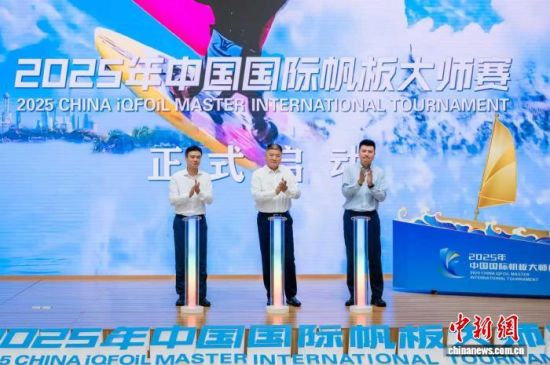The press conference for the 2025 China International Windsurfing Masters was held at the Shanghai Chess Institute. The conference revealed that the competition will take place from November 13 to 17 at Yuandang Lake in Jinze Town, Qingpu District, Shanghai.
Since its establishment in 2018, the China International Windsurfing Masters has successfully hosted six editions. After six years of refinement, this year’s competition has been officially approved by World Sailing as an Olympic-class event with 50 points and published on its annual calendar, further elevating the event’s status.
This year’s competition features three categories: professional, masters, and amateur. The professional group consists of current high-level domestic and international athletes. Elite competitors from the Chinese national windsurfing team and national championships, including past Olympic participants, will all make appearances. Among international athletes, multiple high-level competitors from France, Italy, Japan, South Korea and other countries have confirmed their participation, including the men’s professional defending champion Fabien Pianazza.
The competition will follow World Sailing’s 2025-2028 racing rules. Multiple high-level domestic and international judges have been invited to officiate, including 3 international-level judges and 5 national-level judges, to ensure the event’s fairness, impartiality, and professionalism.
This year’s event will be held at Yuandang Lake within the Grand View Garden in Qingpu District. Compared to previous venues, this location offers more open waters and better wind conditions, providing competitors with more complete racing conditions. Additionally, this year’s course has been changed to slalom racing, which allows spectators to directly see competitors’ real-time rankings, significantly enhancing the event’s viewing experience compared to traditional buoy courses.

The competition medals were also unveiled during the press conference. The design centers around the concept of “harnessing the wind and waves, unifying movement and stillness,” aiming to transcend the static nature of traditional medals and create a precious memento that carries the soul of windsurfing and resonates with winners. Surging waves surround the medal’s edges, echoing the central windsurfing board. The rotating board freezes the dynamic competition scene within a small space, bringing the wind to life and making the waves move. With a light touch of their fingers, winners can relive the thrill and freedom of riding the wind on the competition course, symbolizing that the sports spirit never stops and life’s journey continues forward.
The influence of sports events extends beyond the competition itself. Through the “sports + tourism” model, the event will fully leverage its impact by designing unique “follow the competition to travel” routes that attract spectators to visit surrounding areas. During the event period, organizers will also arrange for competitors to visit featured attractions such as Jinze Ancient Town, Grand View Garden, and Fangting Water Courtyard. Leveraging unique resources including ancient town scenery, rural charm, and ecological parks, both competitors and tourists can deeply experience the distinctive charm of Chinese countryside while enjoying the excitement of water sports.



